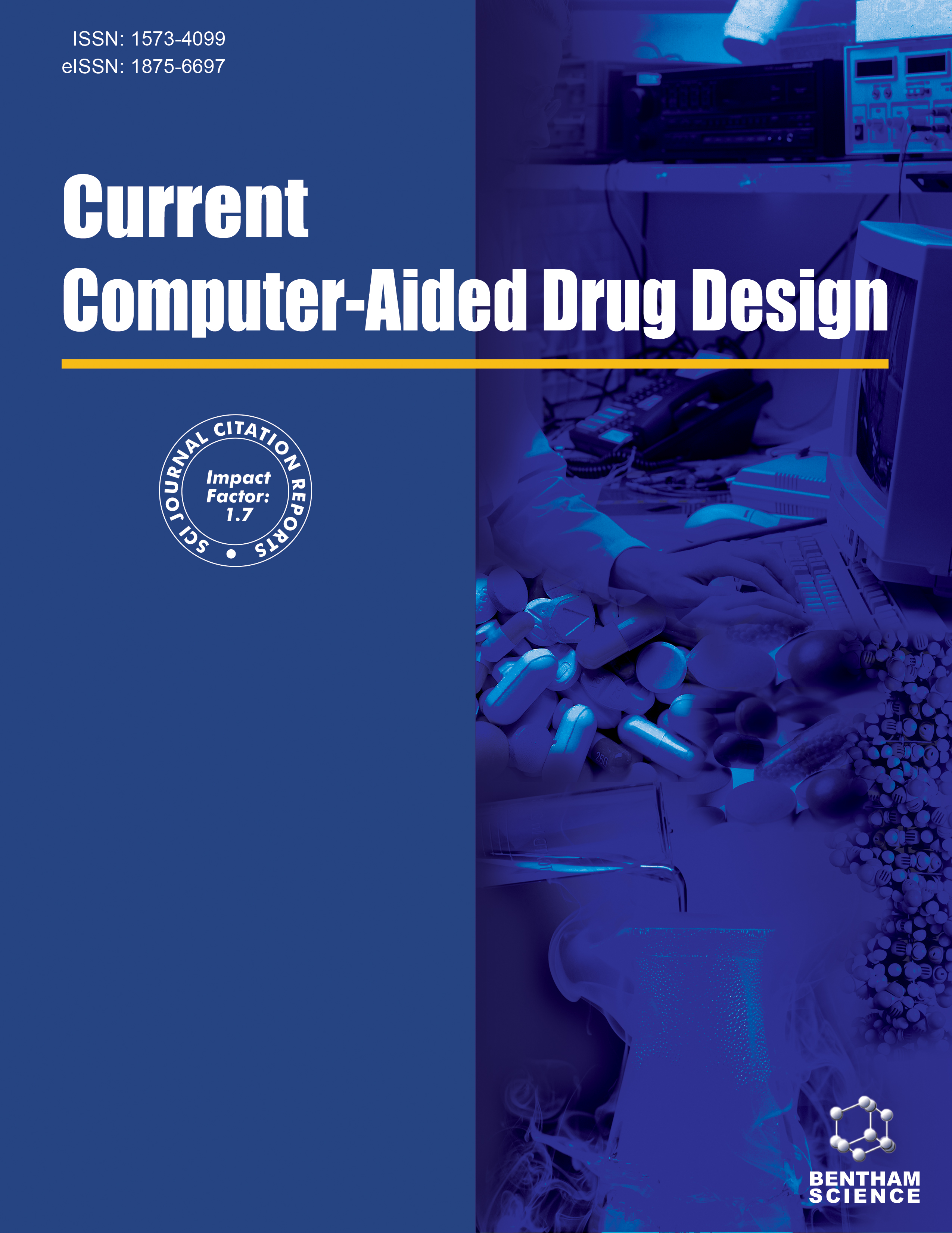- Home
- A-Z Publications
- Current Computer - Aided Drug Design
- Previous Issues
- Volume 5, Issue 3, 2009
Current Computer - Aided Drug Design - Volume 5, Issue 3, 2009
Volume 5, Issue 3, 2009
-
-
Explicit Treatment of Water Molecules in Protein-Ligand Docking
More LessAuthors: Oscar Villacanas, Sergio Madurga, Ernest Giralt and Ignasi BeldaNo biological process can be fully described by computational techniques unless water is taken into consideration. Unfortunately, accurate representation of the water environment in any biological process is normally too timeconsuming with present techniques. Commonly, in ligand-binding docking, all water molecules are removed from the experimental structure data before the system is prepared, in which case it i Read More
-
-
-
Molecular Dynamics Simulations?? of Kv Channels and Gating-Modifier Peptide Toxins
More LessActivation of voltage-dependent K+ (Kv) channels modulates cellular excitability in several physiological systems including neuronal and cardiac cells. Given recent progress in structure determination and in computation technology, molecular dynamics (MD) simulation analyses have become a valuable tool in studies of voltage-dependent gating of Kv channels. However, due to the complex voltage-sensing mechanisms and int Read More
-
-
-
Recent Advances in NNRTI Design: Computer-Aided Molecular Design Approaches
More LessReverse transcriptase (RT), an essential enzyme for HIV-1 (human immunodeficiency virus type-1) life cycle, is a key target in drug discovery efforts against HIV-1 infection. Non-nucleoside reverse transcriptase inhibitors (NNRTIs) are very specific to HIV-1 RT and have relatively less toxicity than the nucleoside reverse transcriptase inhibitors (NRTIs). However, the rapid emergence of drug-resistant viral strains has limited the ther Read More
-
-
-
Recent Studies of QSAR on Inhibitors of Estrogen Receptor and Human Eosinophil Phosphodiesterase
More LessAuthors: Yuhong Xiang, Zhuoyong Zhang, Aijing Xiao and Jinxu HuoQuantitative structure-activity relationships (QSARs) techniques are routinely used in modern computer-aided drug design. In this review, the common generalization and computational procedures of QSAR methods (CoMFA, CoMSIA, and HQSA) are described in detail. The predictive ability of CoMFA and CoMSIA models depends directly on the quality of molecular alignment, the selection of probe, the difference of steps and Read More
-
Volumes & issues
-
Volume 21 (2025)
-
Volume 20 (2024)
-
Volume 19 (2023)
-
Volume 18 (2022)
-
Volume 17 (2021)
-
Volume 16 (2020)
-
Volume 15 (2019)
-
Volume 14 (2018)
-
Volume 13 (2017)
-
Volume 12 (2016)
-
Volume 11 (2015)
-
Volume 10 (2014)
-
Volume 9 (2013)
-
Volume 8 (2012)
-
Volume 7 (2011)
-
Volume 6 (2010)
-
Volume 5 (2009)
-
Volume 4 (2008)
-
Volume 3 (2007)
-
Volume 2 (2006)
-
Volume 1 (2005)
Most Read This Month
Article
content/journals/cad
Journal
10
5
false
en


